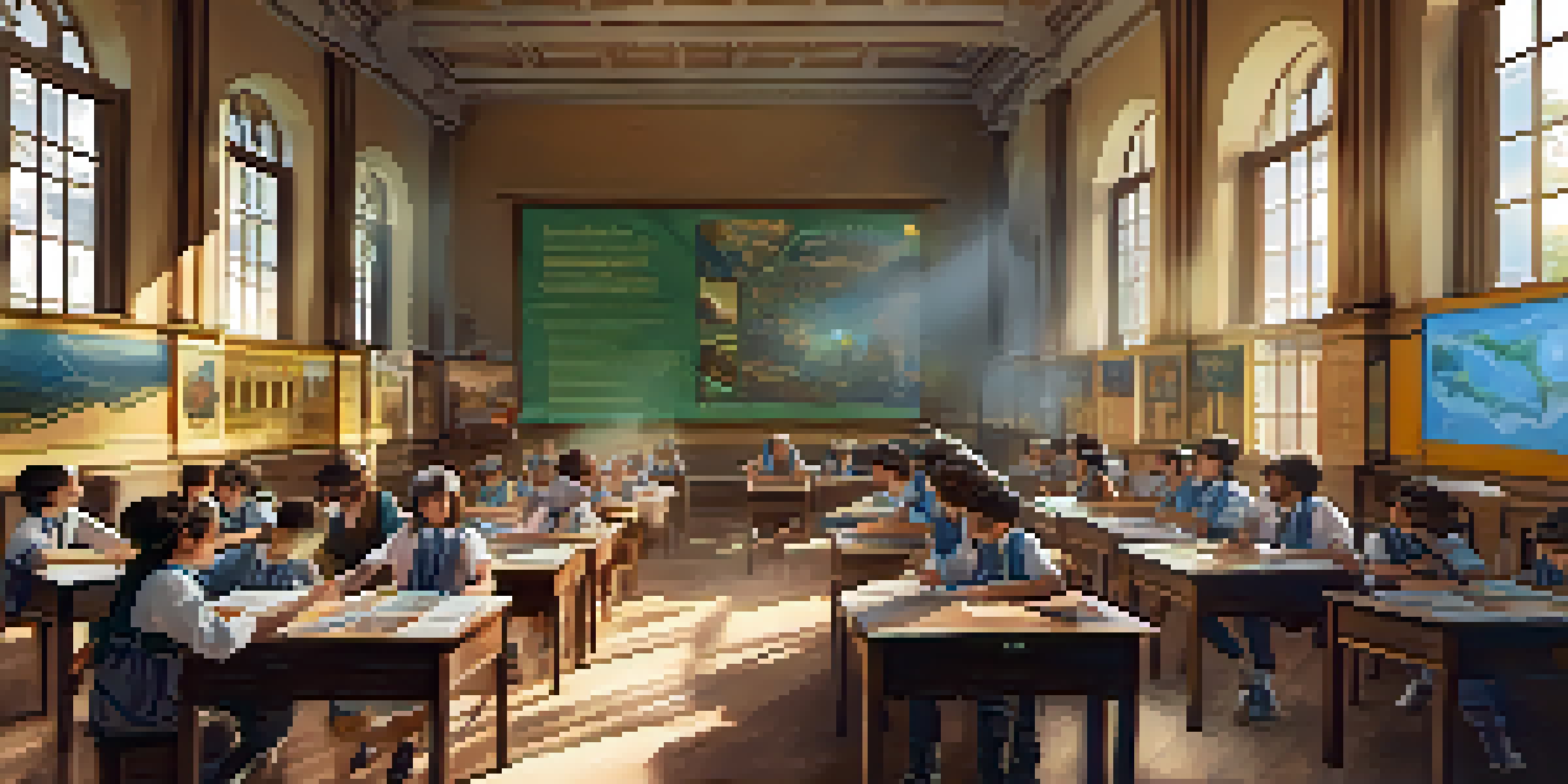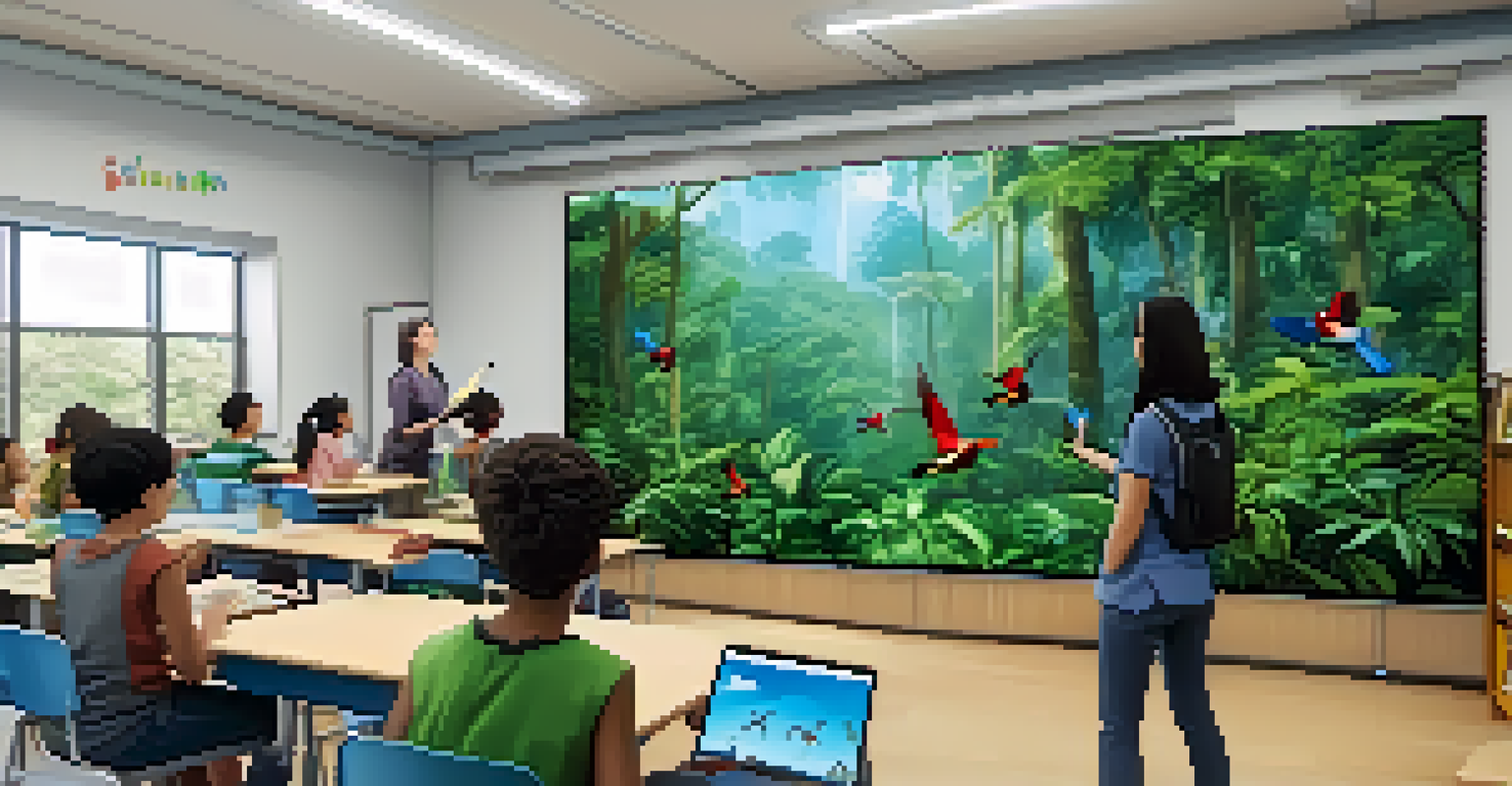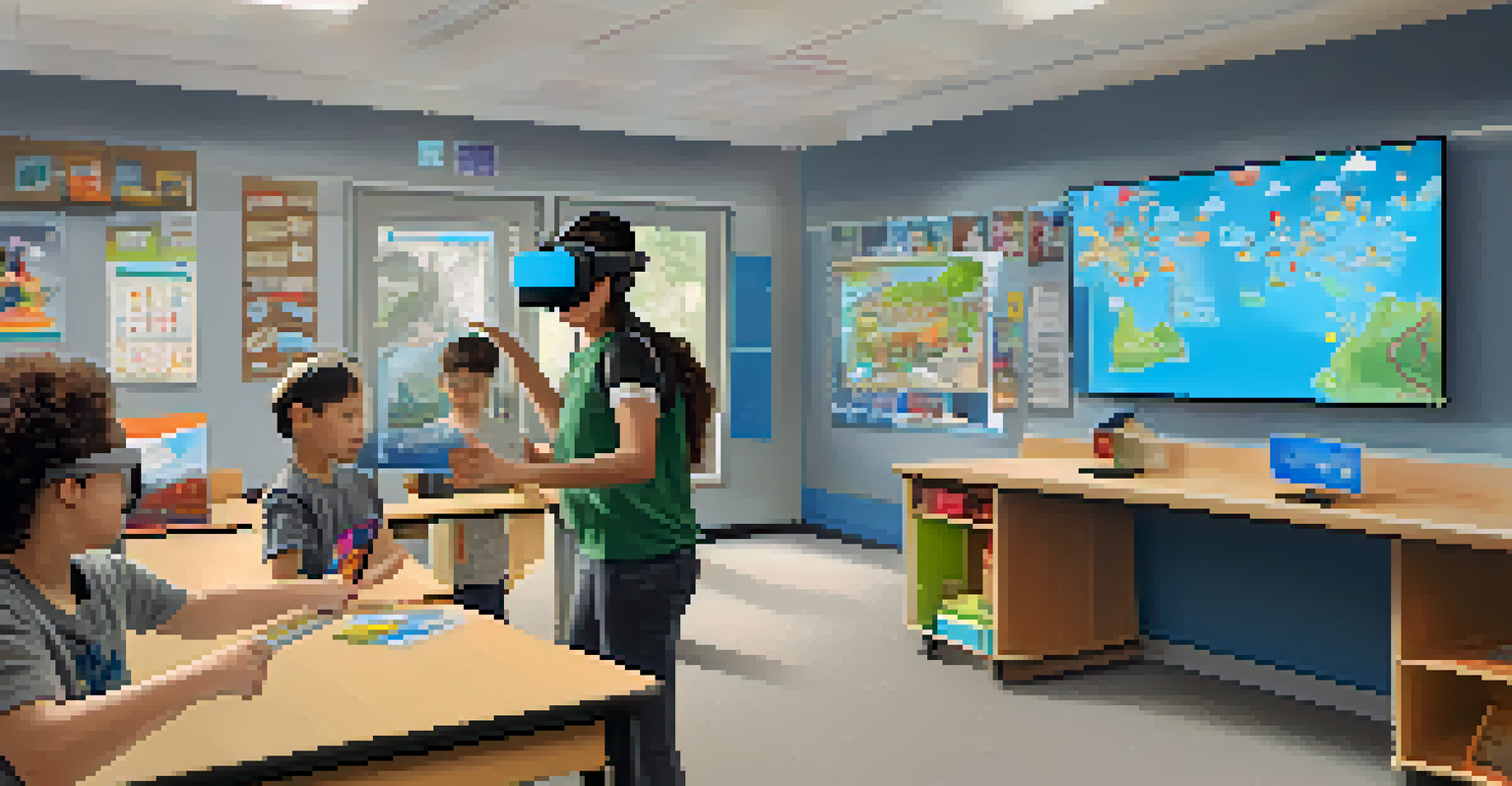Virtual Reality: Transforming the Future of Education Today

Understanding Virtual Reality in Education
Virtual reality (VR) is an immersive technology that creates a simulated environment, allowing users to engage with digital content in a seemingly real way. This technology is not just for gaming; it has incredible potential in education. By placing students in interactive scenarios, VR can enhance learning experiences and improve retention.
Education is the most powerful weapon which you can use to change the world.
Imagine a history lesson where students can walk through ancient Rome or a science class that enables them to explore the human body from the inside. This level of engagement transforms passive learning into an active, participatory experience. Students are no longer just observers; they become explorers and creators.
The appeal of VR lies in its ability to cater to various learning styles. Visual learners can benefit from stunning graphics, while kinesthetic learners can interact with their environment. This adaptability makes VR a powerful tool for educators looking to meet diverse student needs.
Enhancing Engagement Through Immersive Experiences
One of the most significant challenges in education today is maintaining student engagement. Traditional methods can sometimes feel stale, but VR breathes new life into lessons. When students can don a VR headset and dive into a different world, their interest skyrockets.

For instance, a biology class can turn into a journey through a rainforest, where students identify species and learn about ecosystems firsthand. This not only captures their attention but also fosters a deeper understanding of complex concepts. Engaged students are more likely to absorb information and participate actively.
VR Enhances Student Engagement
Virtual reality transforms traditional lessons into immersive experiences, significantly boosting student interest and participation.
Furthermore, immersive experiences can create emotional connections to the material. When students experience history or science in a visceral way, it can ignite a passion for learning that lasts well beyond the classroom.
Bridging the Gap: Access to Remote Learning
Virtual reality has the potential to bridge educational gaps, especially for students in remote or underserved areas. With VR, learners can access quality educational resources and experiences that may not be available locally. This technology can help level the playing field, offering everyone a chance to succeed.
The beautiful thing about learning is that no one can take it away from you.
For instance, students in rural areas could take virtual field trips to museums or participate in live science experiments with professionals from around the globe. This access reduces barriers and opens doors to knowledge that previously seemed out of reach.
Moreover, VR can facilitate collaboration between students from different backgrounds and locations. By working together in a virtual space, they can share perspectives and learn from one another, enriching their educational experience.
Cultivating Critical Thinking and Problem-Solving Skills
Virtual reality doesn't just make learning fun; it also promotes critical thinking and problem-solving skills. By placing students in realistic scenarios where they must make decisions, VR encourages them to analyze situations and think creatively. This hands-on approach is invaluable in developing essential skills for the future.
For example, a VR simulation might present students with a real-world environmental issue, challenging them to devise solutions. They can experiment with different strategies and see the outcomes of their decisions in real-time. This trial-and-error process mimics real-life challenges, preparing them for future endeavors.
Bridging Educational Gaps with VR
VR provides access to quality educational resources for students in remote or underserved areas, leveling the playing field for all learners.
As students navigate these scenarios, they also learn to collaborate and communicate effectively with peers. The social aspect of VR enhances teamwork, which is crucial in today’s interconnected world.
Supporting Special Education Needs with VR
Virtual reality is a game-changer for students with special education needs. It can provide tailored experiences that accommodate various disabilities, enabling these learners to engage in ways that traditional methods might not allow. This personalization is key to fostering inclusivity in education.
For instance, students with autism may find social interactions challenging. VR can simulate social situations in a controlled environment, allowing them to practice and develop their skills without the pressure of real-world consequences. This gradual exposure can lead to greater confidence and comfort in social settings.
Additionally, VR can cater to physical disabilities by offering experiences that might be difficult for students to access otherwise. Whether it's exploring a virtual museum or participating in a simulated sports event, the possibilities for engagement are endless.
The Role of Teachers in a VR-Enhanced Classroom
While VR technology offers incredible opportunities, the role of teachers remains paramount in a VR-enhanced classroom. Educators must facilitate and guide the learning experience, ensuring that students can maximize the benefits of virtual reality. Their expertise is crucial in integrating VR effectively into the curriculum.
Teachers can curate content, select appropriate simulations, and provide context for the experiences students encounter. This guidance helps students connect virtual experiences with real-world applications, enhancing their understanding further.
Teachers Guide VR Learning
The effectiveness of VR in education relies heavily on teachers, who play a crucial role in facilitating and integrating these technologies into the curriculum.
Moreover, teachers can foster discussions around the virtual experiences, encouraging critical reflection and deeper learning. The combination of advanced technology and skilled educators creates a powerful learning environment that prepares students for the future.
Challenges and Considerations in Implementing VR
Despite the exciting potential of VR in education, there are challenges to consider. Accessibility to the necessary technology can be a significant barrier, particularly in underfunded schools or areas with limited resources. Ensuring that all students have equal access to VR experiences is crucial for its successful implementation.
Additionally, educators need proper training to integrate VR into their teaching effectively. Without understanding how to use this technology, its benefits may not be fully realized. Professional development programs focused on VR can empower teachers to embrace this innovative approach.

Finally, it's essential to balance VR use with traditional teaching methods. While VR offers unique advantages, it should complement rather than replace foundational learning experiences. Striking this balance will ensure that students receive a well-rounded education.